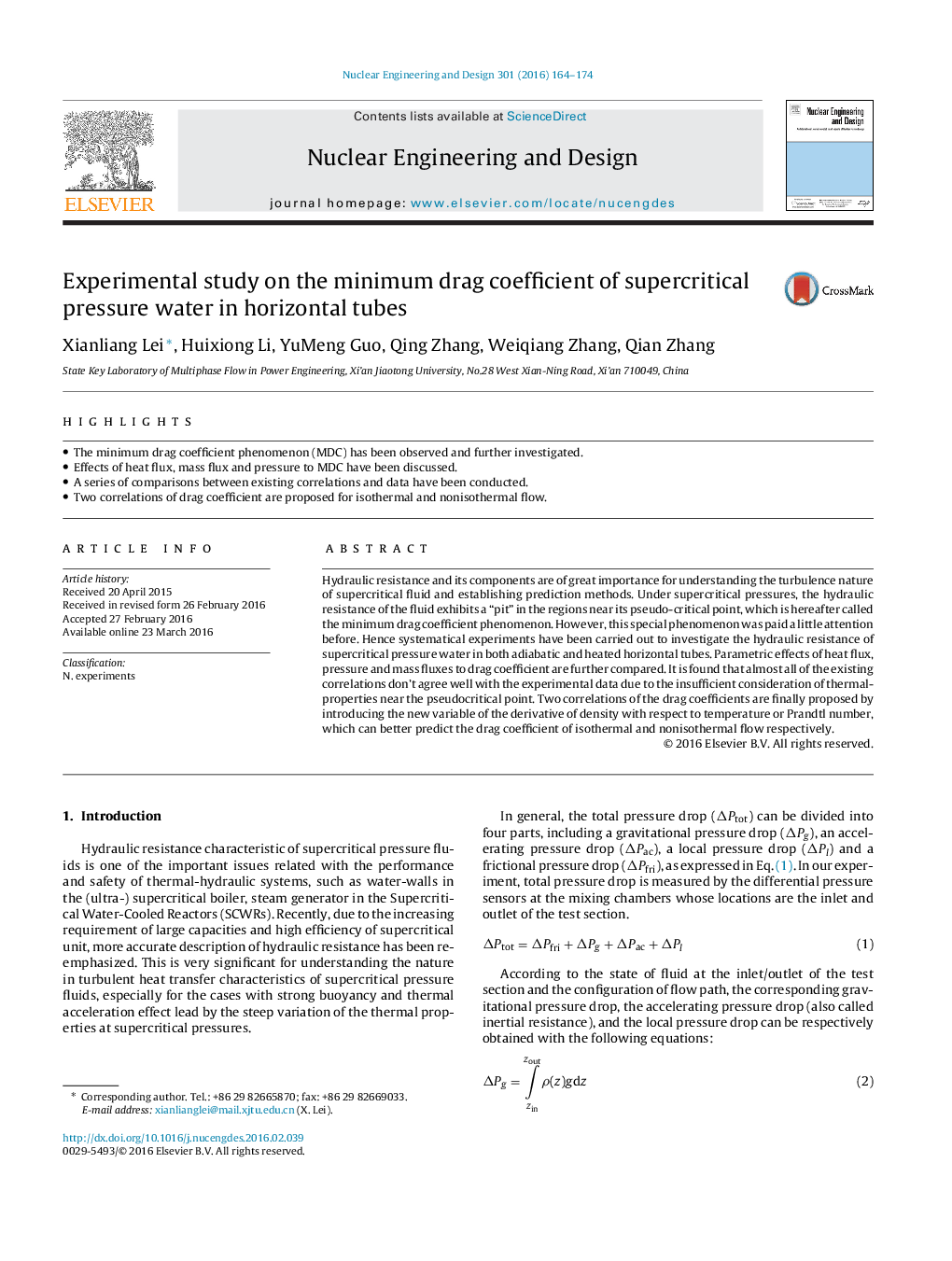| Article ID | Journal | Published Year | Pages | File Type |
|---|---|---|---|---|
| 295971 | Nuclear Engineering and Design | 2016 | 11 Pages |
•The minimum drag coefficient phenomenon (MDC) has been observed and further investigated.•Effects of heat flux, mass flux and pressure to MDC have been discussed.•A series of comparisons between existing correlations and data have been conducted.•Two correlations of drag coefficient are proposed for isothermal and nonisothermal flow.
Hydraulic resistance and its components are of great importance for understanding the turbulence nature of supercritical fluid and establishing prediction methods. Under supercritical pressures, the hydraulic resistance of the fluid exhibits a “pit” in the regions near its pseudo-critical point, which is hereafter called the minimum drag coefficient phenomenon. However, this special phenomenon was paid a little attention before. Hence systematical experiments have been carried out to investigate the hydraulic resistance of supercritical pressure water in both adiabatic and heated horizontal tubes. Parametric effects of heat flux, pressure and mass fluxes to drag coefficient are further compared. It is found that almost all of the existing correlations don’t agree well with the experimental data due to the insufficient consideration of thermal-properties near the pseudocritical point. Two correlations of the drag coefficients are finally proposed by introducing the new variable of the derivative of density with respect to temperature or Prandtl number, which can better predict the drag coefficient of isothermal and nonisothermal flow respectively.
